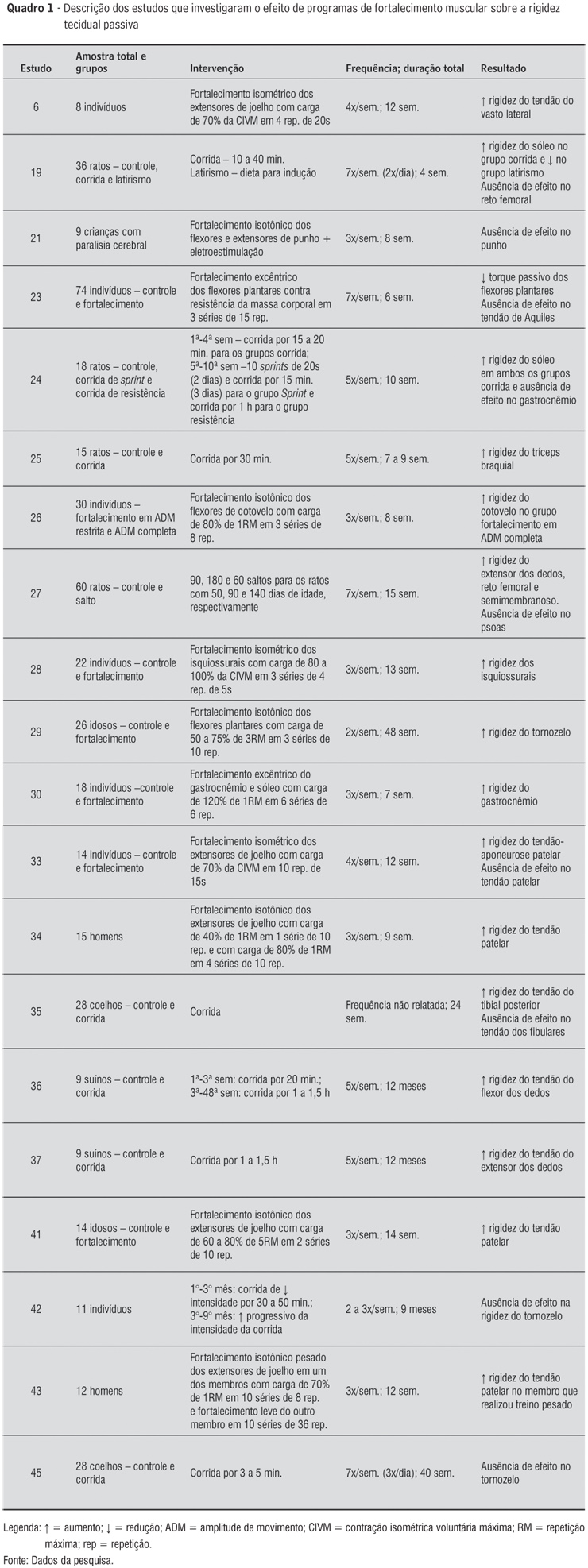INTRODUCTION: High or low levels of passive stiffness of muscles, tendons, ligaments and fascia can be related to the occurrence of movement dysfunctions and to the development of musculoskeletal injuries. The treatment of these conditions often involves the use of techniques to modify stiffness, such as strengthening or stretching. OBJECTIVE: To conduct a critical review in order to investigate the effects of strength and stretching exercises on tissue passive stiffness. MATERIALS AND METHODS: A literature research was performed with the Medline, Scielo, Lilacs and PEDro. Experimental studies carried out in animals and humans, without data limit, were included in this research. RESULTS: Twenty studies about the effect of strength training on passive stiffness and 13 studies about the effect of stretching exercises on passive stiffness were selected. CONCLUSION: The studies suggest that strength exercises of high intensity are capable to increase the levels of tissue stiffness in animals and humans. The increase in cross-sectional area and changes in tissue composition are some of the mechanisms responsible to this enhance. Regarding the muscle strengthening in lengthen position and the eccentric strengthening in the whole range of motion with moderate load, the results are insufficient to confirm the real effects of these techniques in reducing the stiffness levels. Finally, static or contract-relax stretching programs seem to decrease tissue stiffness when performed through protocols of long duration and/or high frequency.
Stiffness; Muscle stretching exercises; Resistance training


